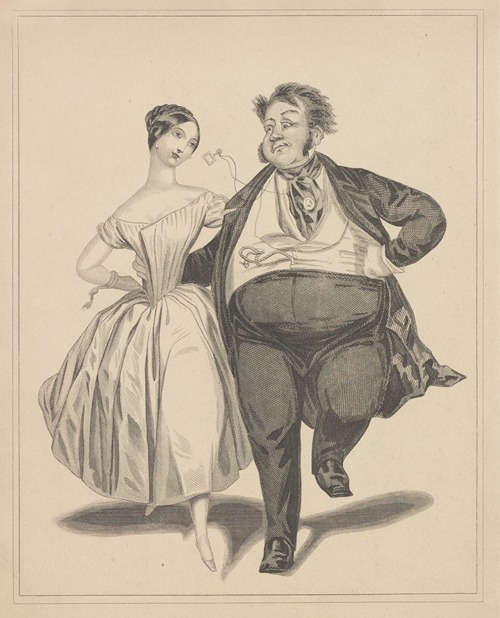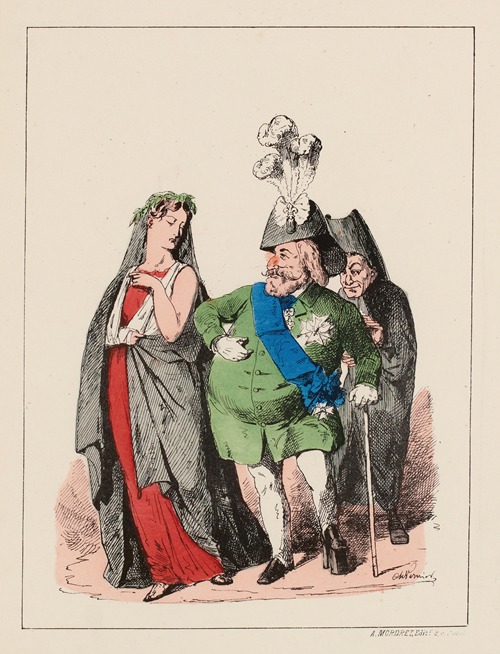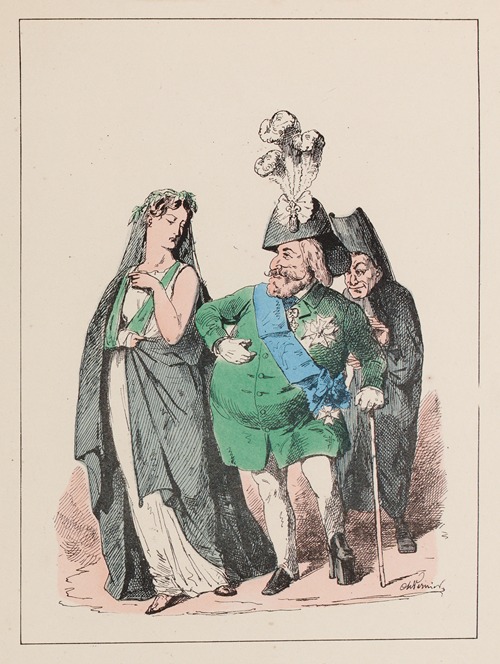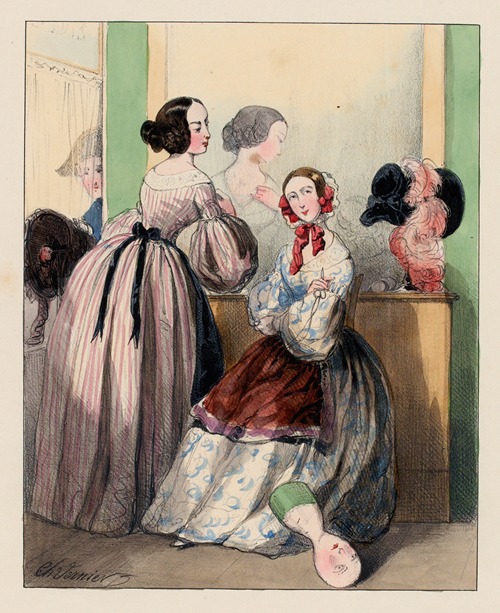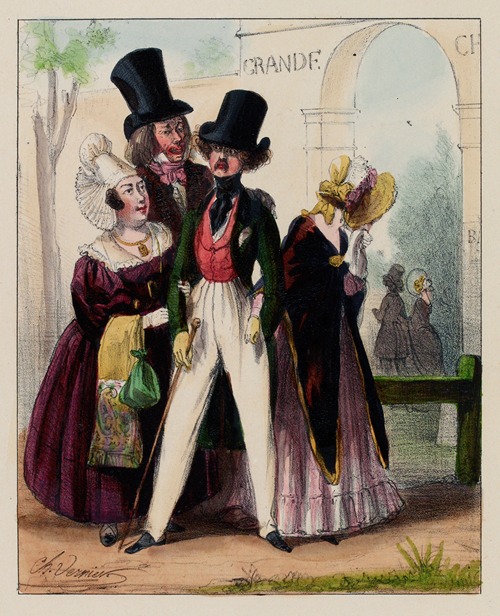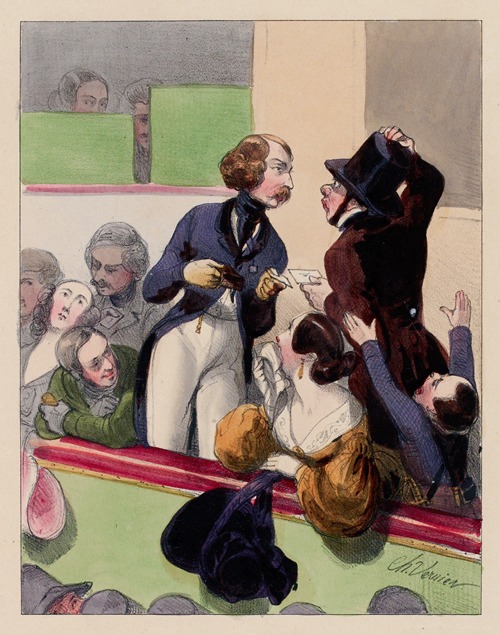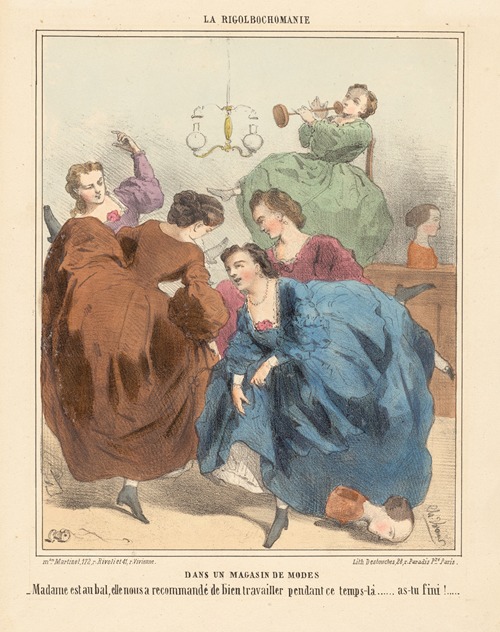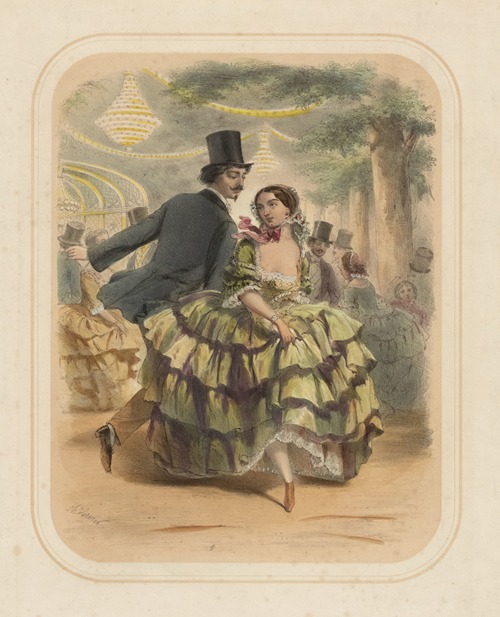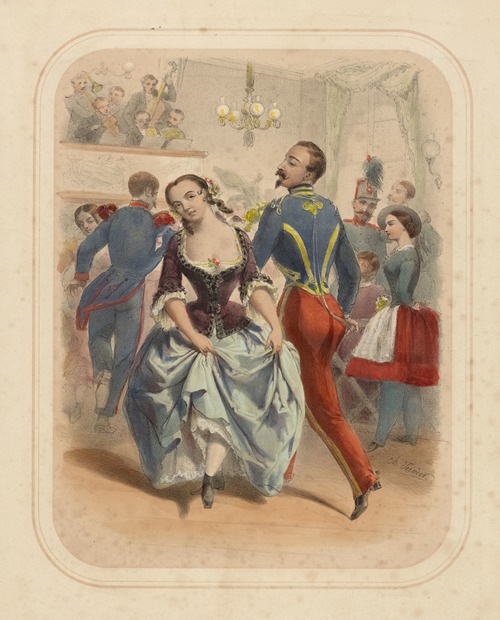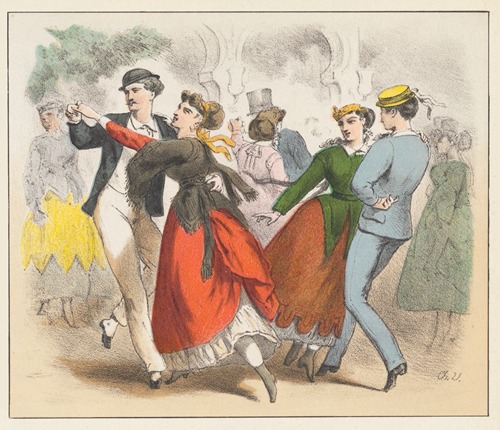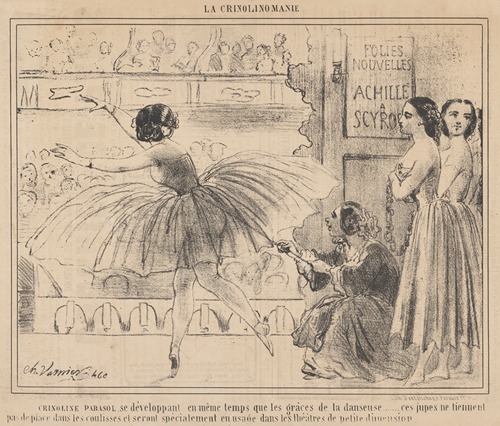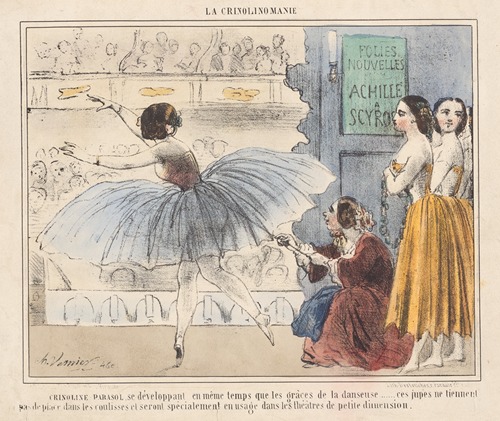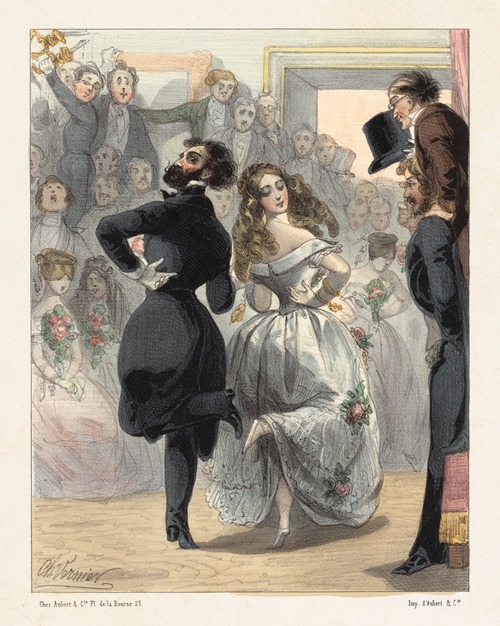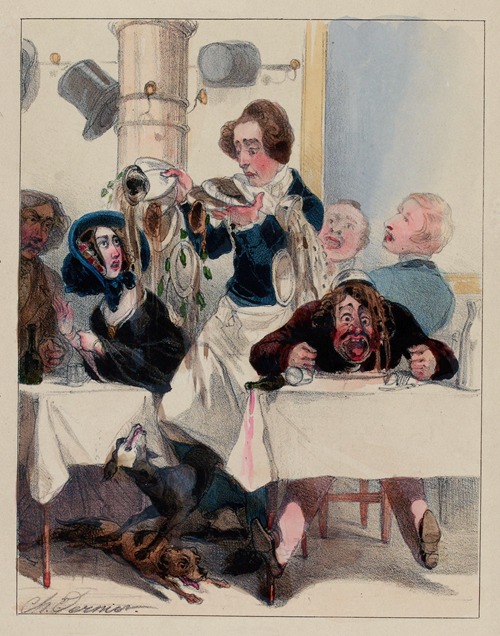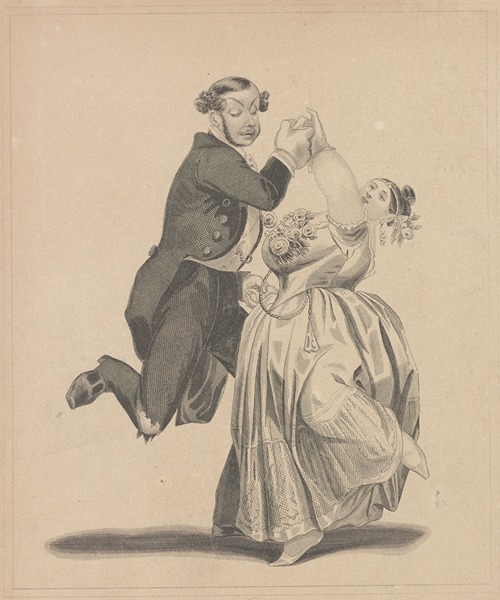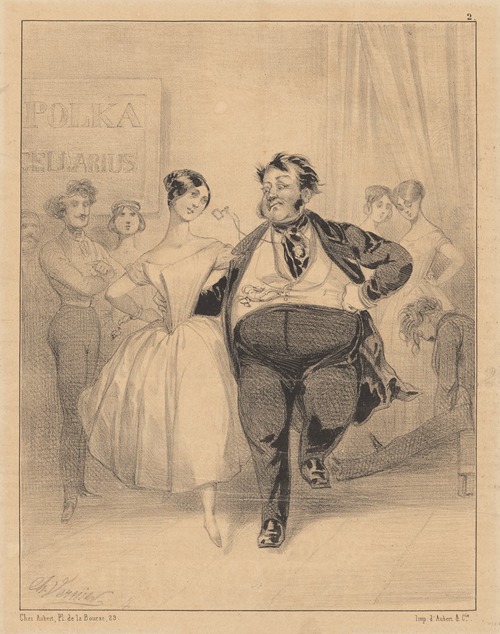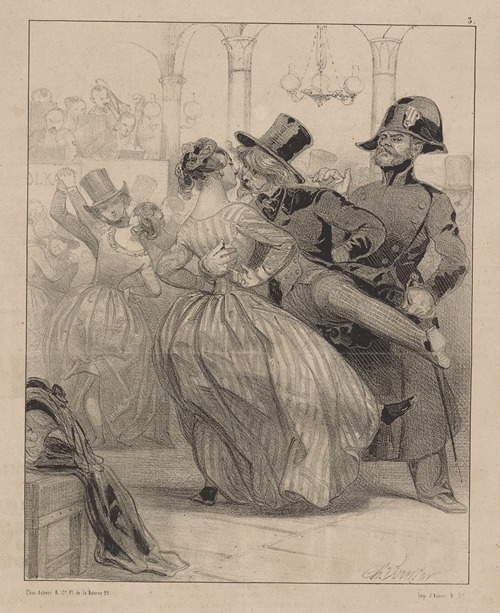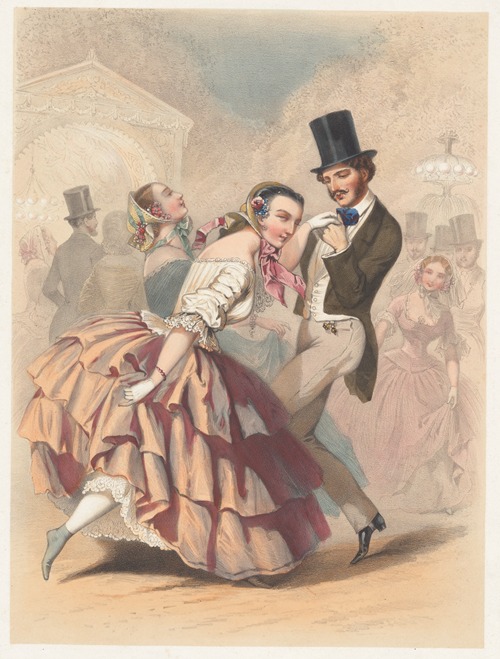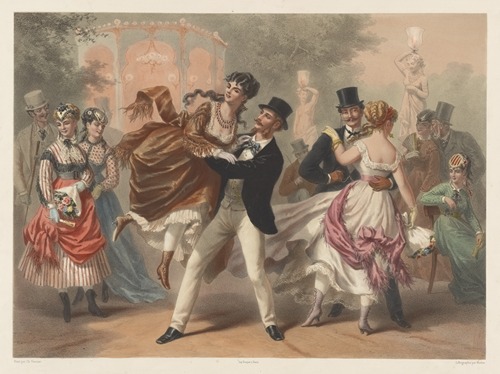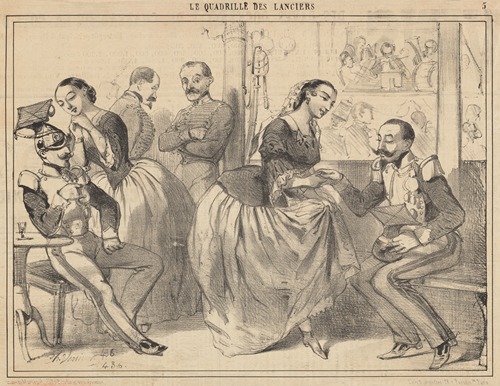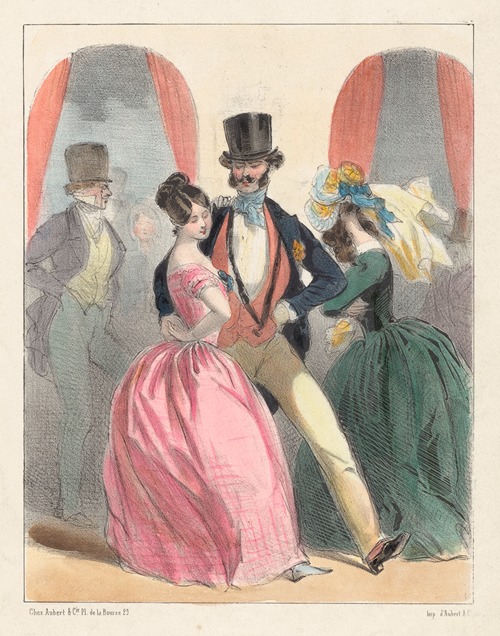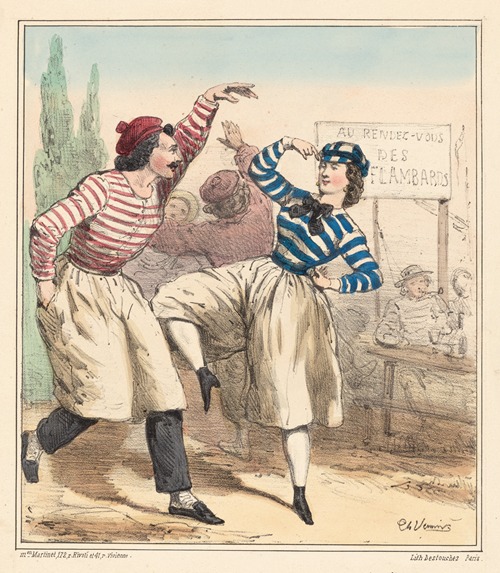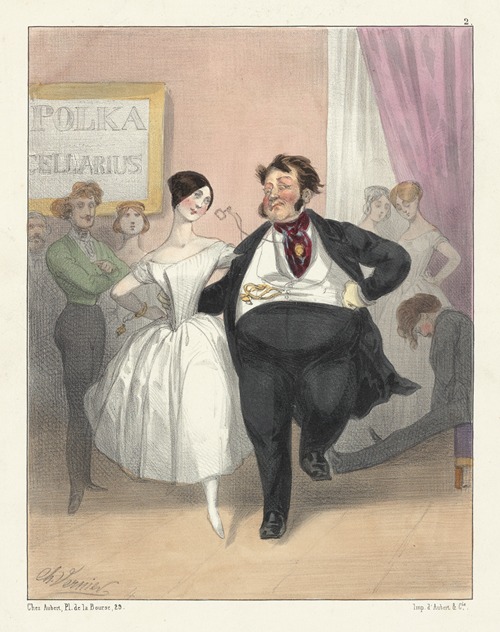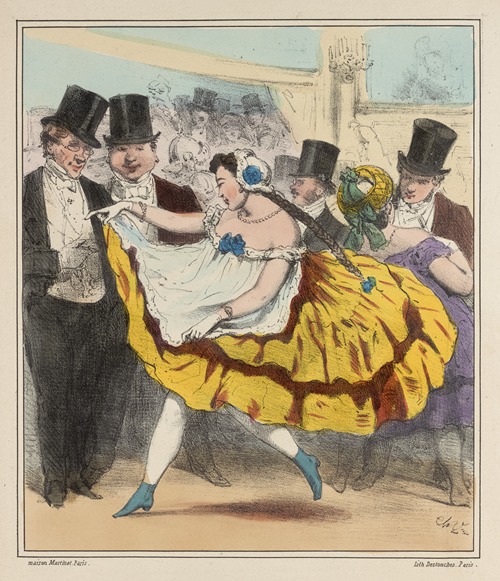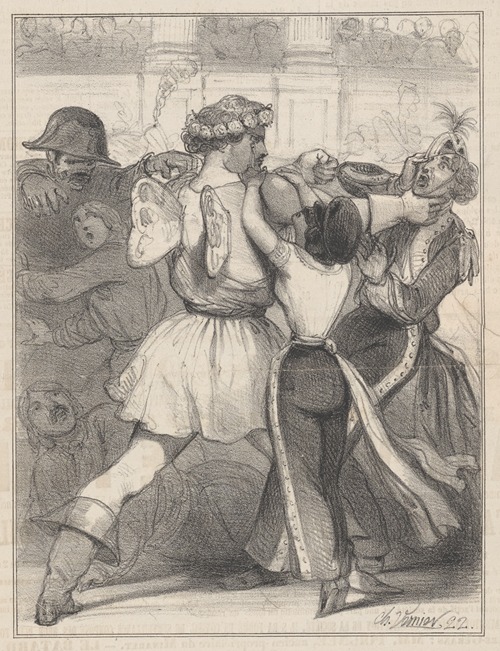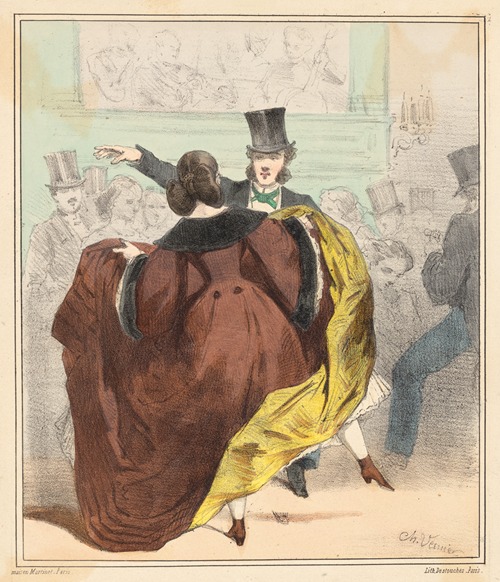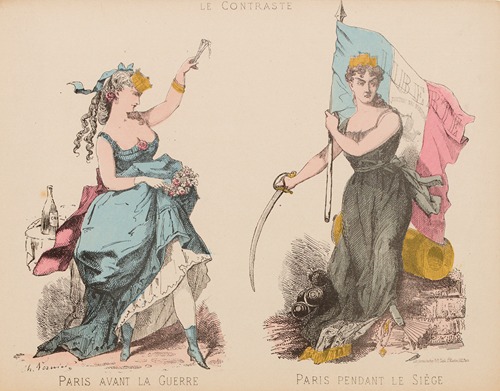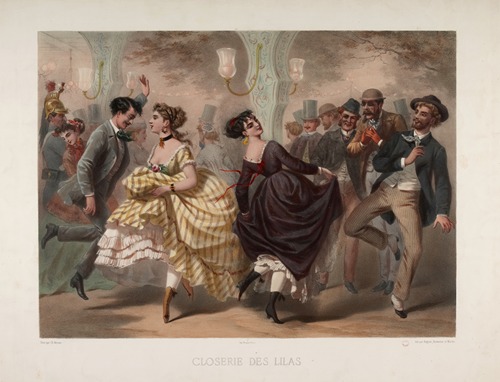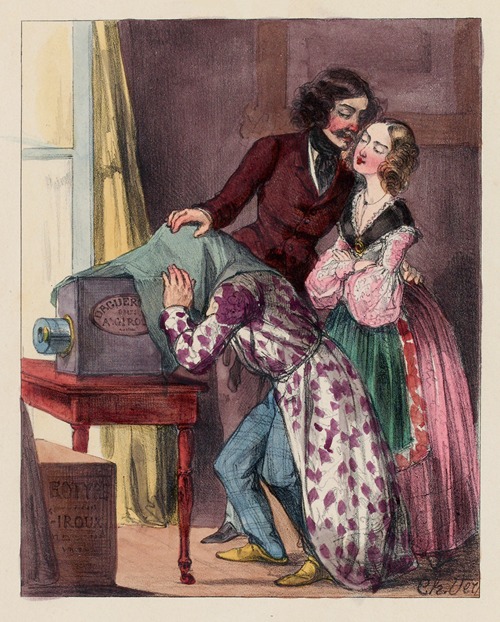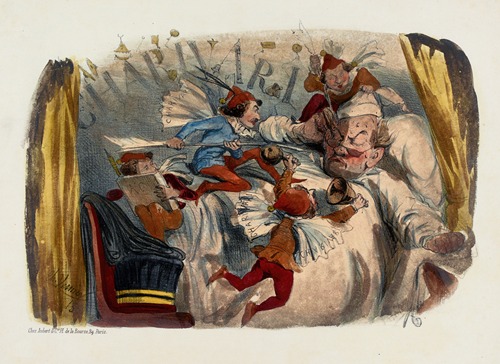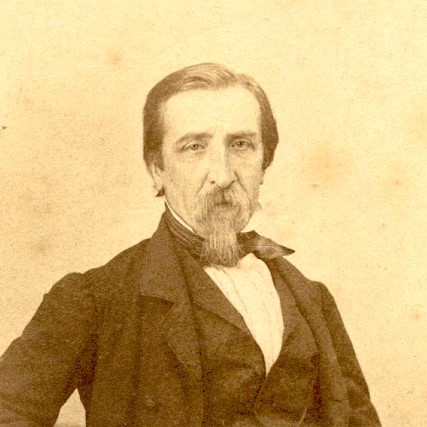

Charles Vernier
Charles Vernier was a French caricaturist and lithographer.
He worked for Le Charivari and published several illustrated collections.
Son of Thomas Jean André Vernier, a wine merchant in Bercy, Charles Vernier was born on April 23, 1813 at 4, rue Traversière-Saint-Honoré in the old 2nd arrondissement of Paris. In 1852, he married Marie Lavoine. They had a daughter, Charlotte, who married Captain Jules Joseph Larnaudie. He lived most of his life at 21, rue de Grenelle, Paris. At the end of his life, he retired to Versailles, at 47, boulevard de la Reine, where he died on August 2, 1892.
From an early age, Charles Vernier was attracted to drawing, and in 1830 entered Ingres' studio, where he mastered his art.
Charles Vernier was a draughtsman, lithographer and, above all, a caricaturist. For years, an entire page was reserved for him in Le Charivari, the satirical newspaper of the day.
Charles Vernier's lithographs, a large proportion of which were published in Le Charivari, cover several themes.
The first theme concerns the political life of the 19th century, rich in national and international events. His charges against politicians and censorship earned him stints in Sainte-Pélagie prison. His caricatures of the English, Austrians, Prussians and Russians were sometimes ferocious. Of particular note is the album Les bons Autrichiens, produced jointly with Honoré Daumier, and the French images La politique à double face de l'Angleterre dans les questions de la Pologne et du Schleswig-Holstein.
The second theme concerns nineteenth-century society: his eye is drawn, with witty irony, to the mores of the time. His lithographs are grouped into series: Actualités, Les grisettes, Les bals publics, Au bal masqué, Au bal de l'Opéra, Être et paraître, Les vacances, Les agaçants et les agacés, La pokomanie, Le quadrille des lanciers, Le peuple de Paris, Le jardin des Tuileries, Le Carnaval de 1853, Au Quartier latin, Les travestissements des Parisiens, les fenêtres de Paris, les soirées parisiennes, le pays latin, les 12 mois de l'année, les modes d'hiver, Les rues de Paris, Les grands cafés parisiens, Fêtes du 4 mai 1850.
His satires of civil and military society are sometimes grouped together in albums such as Les troupiers français, Le camp de Chalons, Le camp de Saint-Maur, Nos troupiers en Orient. In the album La Crinolomanie, Charles Vernier presents the women's fashions of the time with irony. In the album La Rigolbochomanie, he assembled lithographic and “choreographic” sketches.
